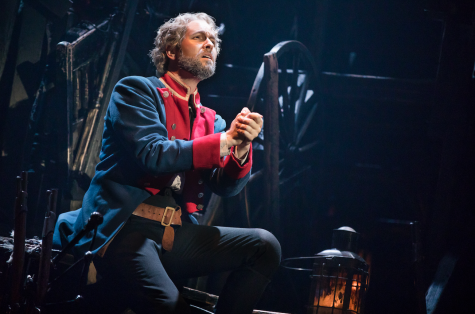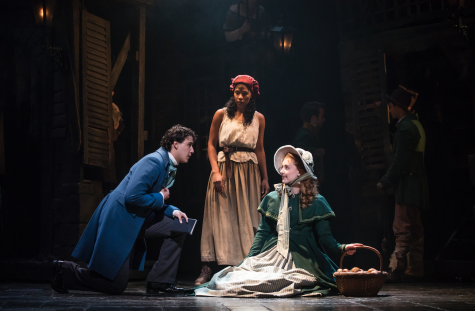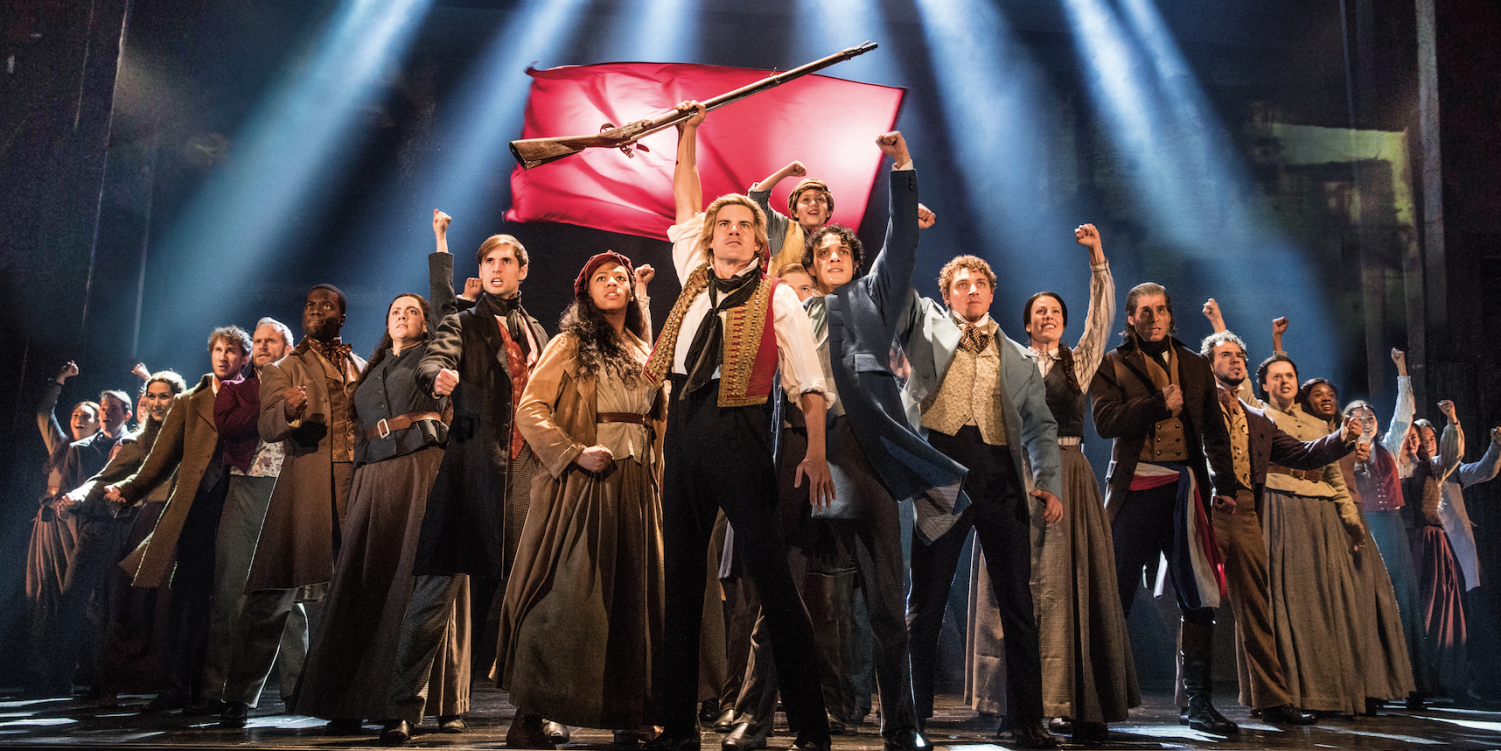Your donation will support the student journalists of Suffolk University. Your contribution will allow us to cover our annual website hosting costs.
‘Les Miserables’ brings revolution to Boston
April 24, 2019
From 1862, when Victor Hugo first published his novel “Les Miserables,” to today, the classic tale has been adapted into TV series, films and a musical. The timeless story of revolutionary Paris continues to captivate audiences, just like it did on April 17 at the Citizens Bank Opera House.
The musical “Les Miserables” is based of Hugo’s book of the same title. The show follows an escaped convict named Jean Valjean who becomes the caretaker for a little girl named Cosette after her mother dies. Ultimately, the plot centers around Valjean’s journey of turning himself into an honest man, while constantly on the run from Javert, the prison guard.
The use of music is vital in the show as most of the story is told through lyrics instead of spoken dialogue between characters. The up-tempo songs in the beginning of the show lay the foundation for the rest of the plot and are crucial in understanding the whole storyline. However, some performers did not clearly pronounce the words, and the lyrics either sounded muffled or were lost in the tune, making it difficult to follow along with the prologue.
Despite jumbled lyrics, the cast was filled with excellent vocalists, most notably Nick Cartell who played the role of Valjean. He showcased his commanding voice and fast vibrato during each song, doing justice to the famous character.

Nick Cartell as Jean Valjean, singing “Bring Him Home”
Cartell saved his best moment for Act II when he flawlessly sang the most iconic song of the show, “Bring Him Home.” As he serenaded Marius, his daughter’s lover played by Joshua Grosso, and desperately prayed the young man would survive the war, his voice gently soared through one note to the next as he delivered an immaculate performance.
The rest of the cast was also comprised of talented singers who excelled both as soloists and as an ensemble. Cosette, played by Jillian Butler, had an airy, flute-like voice that showcased her soprano range, especially during the song “In My Life.”
Other popular numbers such as “Do You Hear The People Sing” and “One Day More,” relied largely on the ensemble and brilliantly blended each voice into one well-balanced sound.
Although singing is what carries the show, the instrumental music is just as valuable as the vocals. The masterful orchestra, directed by Brian Eads, filled the theatre with iconic overtures and gripping battle scenes, continuing to fill the venue with powerful music during the parts where actors have little to no lines.
Each performer also exhibited tremendous acting skills by adding just the right amount of emotion. For example, in the song “Fantine’s Death,” Fantine, played by Mary Kate Moore, laid ailing in bed and gave Valjean permission to take over as her daughter’s guardian. Moore let her voice remain faint and weak, slightly cracking as she tried to sing louder, to convey that she was not going to live. Her quiet, delicate style of singing made it effortless for the audience to sympathize with the struggling single mother.
Traditionally, “Les Miserables” uses a serious tone to depict the grave events of the time period. However, in this production, there seemed to be more humorous elements added, giving the audience more comedic relief than usual. For instance, as Cosette and Marius confess their love for one another in the song “A Heart Full of Love,” Marius is awkward and nervous around her, hilariously causing his voice to crack as he tries to talk to her.
Madame Thenardier, an innkeeper played by Allison Guinn, is normally one of the sassiest characters in the show, but last week Guinn seemed to have extra jokes up her corset. Her obnoxiously loud voice, which echoed through the room whether she was singing or speaking, always made the audience chuckle. Her comical personality shined during “Master of the House,” while she mocked her husband for being full of himself through smart alec remarks and gestures.
While extra bits of humor were included, the majority of the show maintained the musical’s somber tone. In the battle scene for instance, young men stood behind the barricade preparing to risk their lives for the revolution. A child named Gavroche, played by Parker Weathersbee and Parker Dzuba, fearlessly ventured from behind the barricade into the line of fire to help the soldiers fight. Before the boy could return to safety, he’s fatally shot and falls dead into someone’s arms.

Joshua Grosso as Marius, Paige Smallwood as Eponine and Jillian Butler as Cosette
In addition to the acting and background music, the part of this scene that made it impactful was the perfectly timed lighting design. As Gavroche fell from the top of the barricade, two spotlights were gleaming from opposite sides of the set, forming an X across the stage with the child at the center just as the music faded out.
Another mood swaying moment for the lighting design was during the song “Stars.” When Javert sang the heavy ballad, blue lights flooded the stage to depict the nighttime sky. As Josh Davis finished the song, the blue lights faded into bright pale spotlights that glowed around him, and small white stars appeared in the background.
The costume design impressively reflected the historical period. The rich colored dresses worn by Cosette flowed out around her legs and the fabric swirled around her whenever she moved. Her elegant outfits strongly contrasted with the tattered, dirt stained clothes the people of France wore, illustrating the extreme difference between the wealthy and the poor during this time.
“Les Miserables” will play at the Citizens Bank Opera House until April 28.
